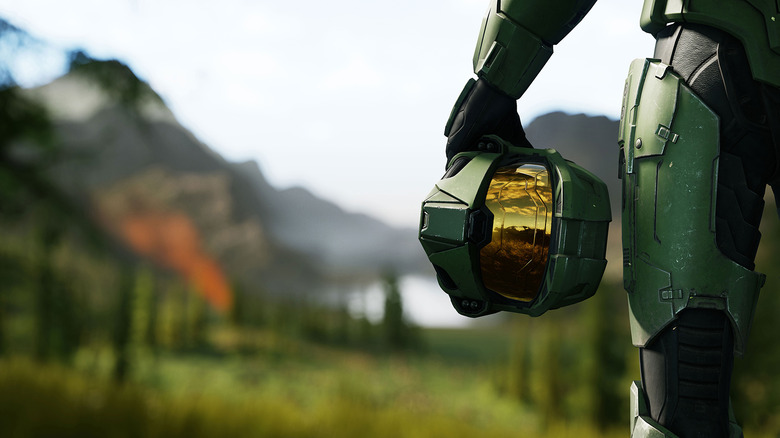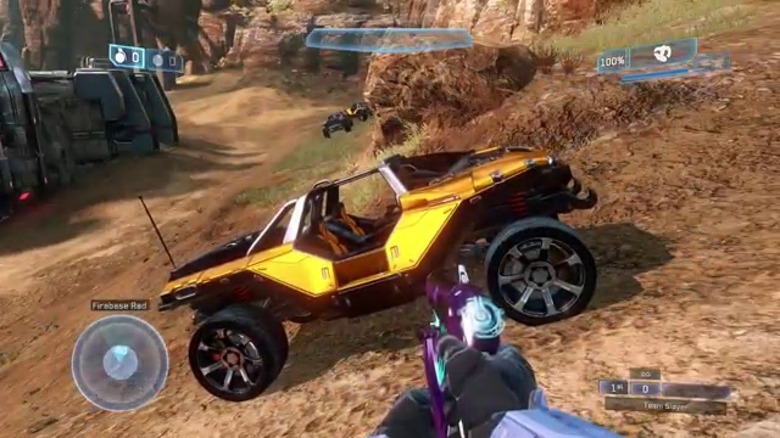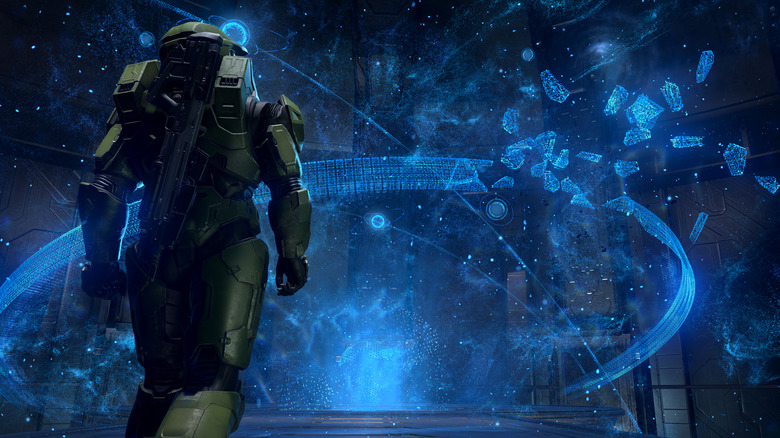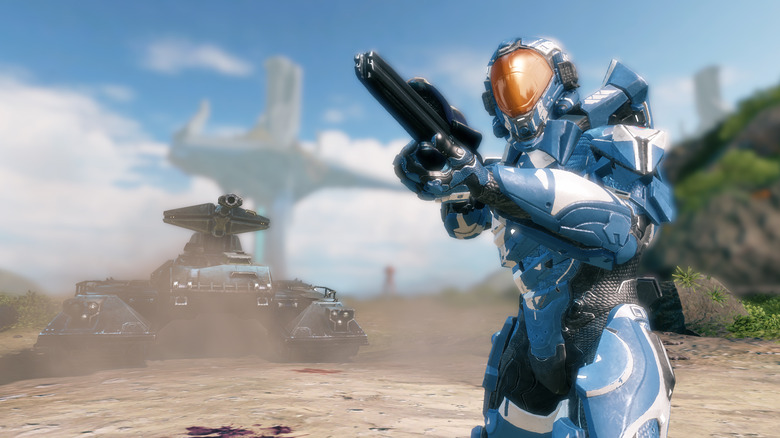Halo Myths That Turned Out To Be True
There's nothing quite like Halo. With its simple yet addictive approach to sci-fi shooter goodness, nearly ever gamer out that has heard of Master Chief and his interplanetary adventures. The series has been around since the beginning of the millennium, with the beloved Halo: Combat Evolved kicking things off in 2001. Bungie spearheaded a series of amazing shooters before passing the torch to 343 Industries in 2010, giving Bungie the time to make Destiny, another sci-fi shooter.
The Halo franchise has spawned many rumors and myths throughout its long history. Some contained nuggets of truth, while others turned out to be outlandish and completely bogus.
Here are the Halo myths that turned out to be true.
Was there really a Golden Warthog?
If you owned an Xbox, you probably played Halo 2 at some point in your life, and if you did, the phrase "Golden Warthog" might trigger some nostalgic memories for you. In the game, billboards featuring this vehicle were scattered throughout, teasing players who desperately wanted this luxury ride. But alas, no matter how hard people searched, they seemed to be stuck with the drab, green Warthogs we all know and love.
According to myths that circulated at the time, there were ways to get that Golden Warthog in multiplayer. It involved a lengthy, complicated ritual on the Headlong map. You'd have to blow up a few Banshees and shoot a certain wall six times, among other things. Unfortunately, no one ever found the Golden Warthog, so this myth seemed busted — at least, until Halo 2 Anniversary came out.
It appears the developers at 343 Industries have a pretty great sense of humor. After seeing everyone desperately try to find the Golden Warthog, 343 added it to the Forge in Halo 2 Anniversary, so in a roundabout way, the mythical vehicle really does exist. It doesn't have any turrets, so it works purely as a way to get from point A to point B in style. But it sure looks cool, doesn't it?
Was Halo's pistol overpowered on purpose?
If you were around when Halo first became popular, you might remember (and dread) the M6D pistol. Despite being a sidearm, it would often down enemies in three shots. The M6D eventually sparked a popular myth in the Halo series: that it was overpowered on purpose.
Players proposed this story about the pistol being buffed by Bungie during the tail end of development for reasons unclear. Some claimed it was done so the developers could have an easier time playing their own game. Of course, these are just baseless rumors that eventually became Halo mythology.
But in a surprising twist, these rumors were right on the money. In an interview with IGN during E3 2013, Jason Jones, co-founder of Bungie, confirmed that he was personally responsible for the M6D's incredible power.
"I will take the credit and blame for the pistol in Halo," Jones said in the interview.
As the story goes, the team at Bungie was close to finalizing Halo, but devs still felt the pistol was weak. They were at the point where changing data would undo months of work. So Jones went ahead and tweaked the code, adding a line that buffed the pistol right after a map loads.
All those times you sniped your friend across the map with the pistol? You have Bungie's Jason Jones to thank for that.
Were there ghosts in Halo? (Like, the haunted kind?)
As far as myths and made-up stories go, nothing beats a tall tale about a ghost. And no, we're not talking about the Halo vehicle; we mean actual ghosts. The early days of Halo were littered with these sorts of spooky stories, especially Halo 2. In online matches, players noticed other Spartans with odd features and behaviors about them, and whenever these Spartans killed someone, the feed would credit the kill to the Guardians. In other words, the game saw these deaths as accidents, not actual kills.
The community chalked these weird experiences up as ghostly encounters. You can see what some of these "ghosts" looked like in this video, which was one of the earliest reported sightings of these alleged specters. These weren't mods, but these ghosts somehow didn't show up on the leaderboards. How did that happen?
Turns out, random players were actually spawning into these games, becoming the mythical ghosts that plagued Halo forums for years. When Halo: Reach came out, players were able to replicate the glitch by overloading the game. This let a player spawn into a map as a "ghost," erratic movement and all. It's impossible to say what caused the glitch in previous games, but players suspect stress on the game engine and networking bugs may have played a role.




